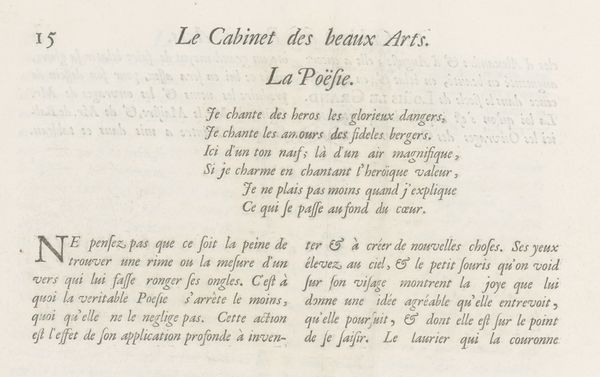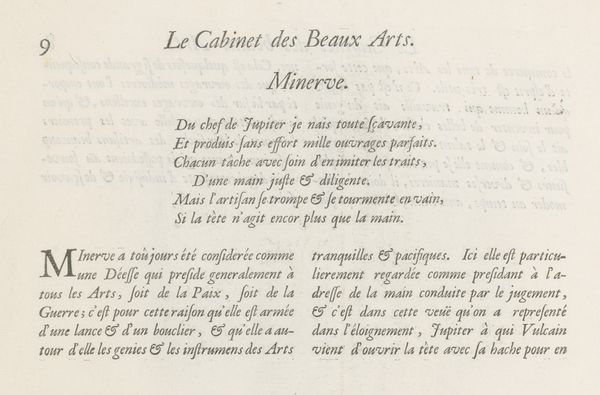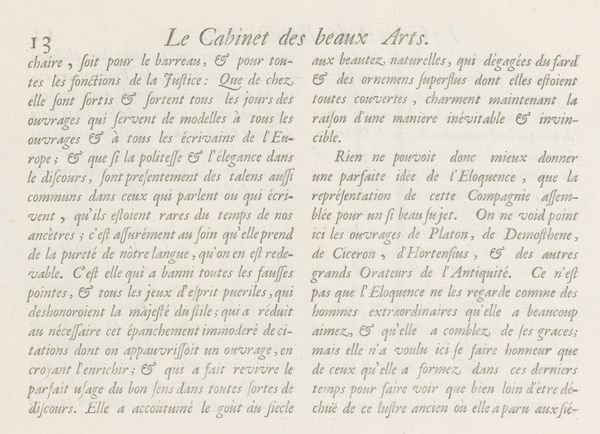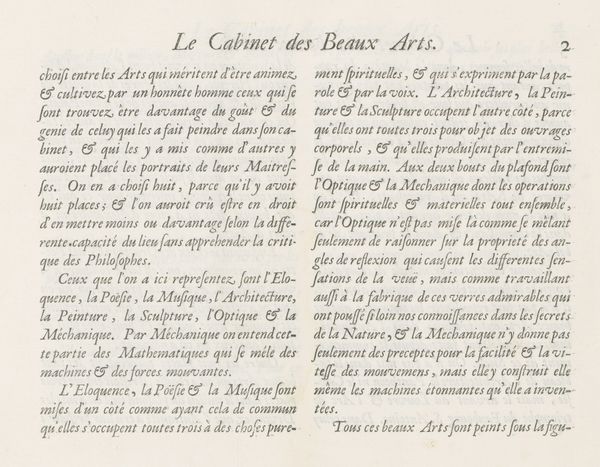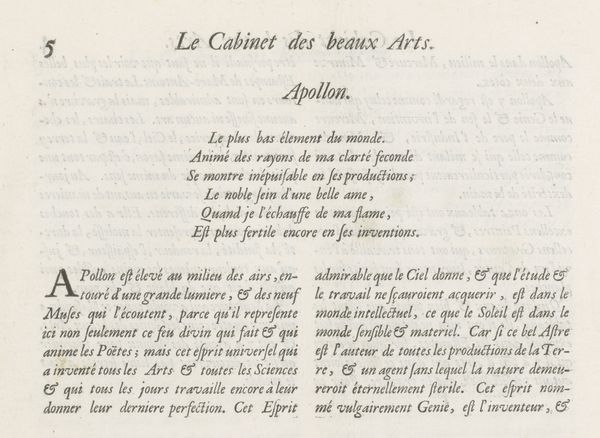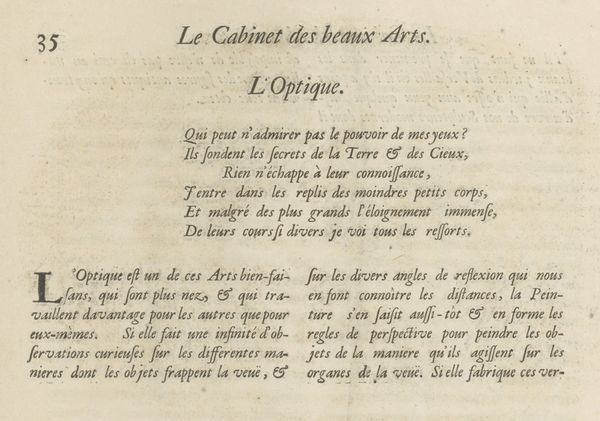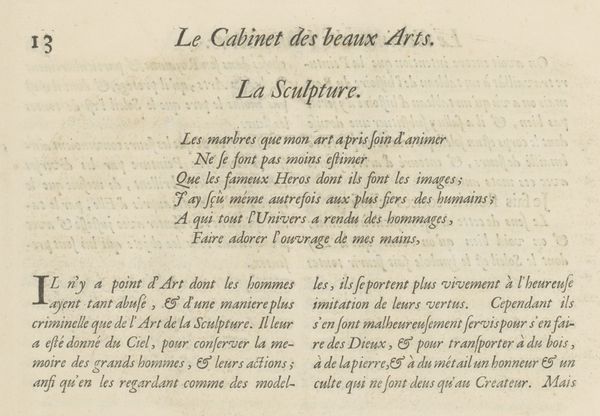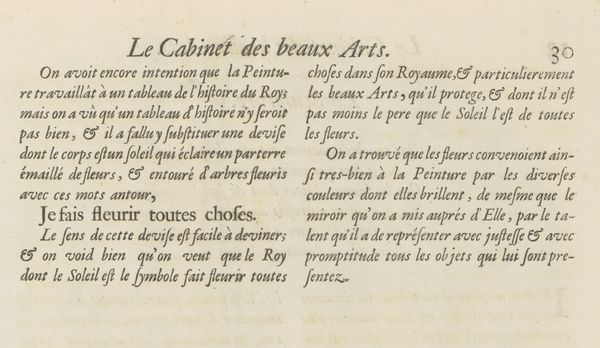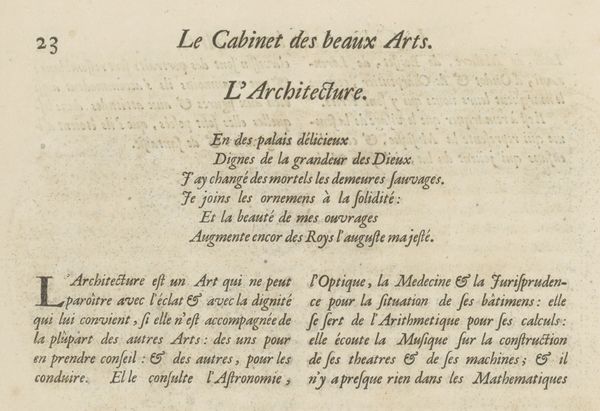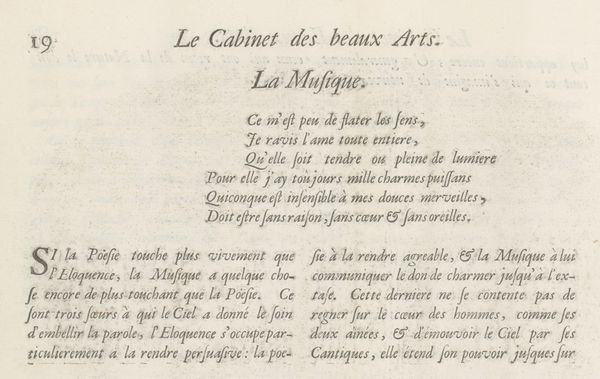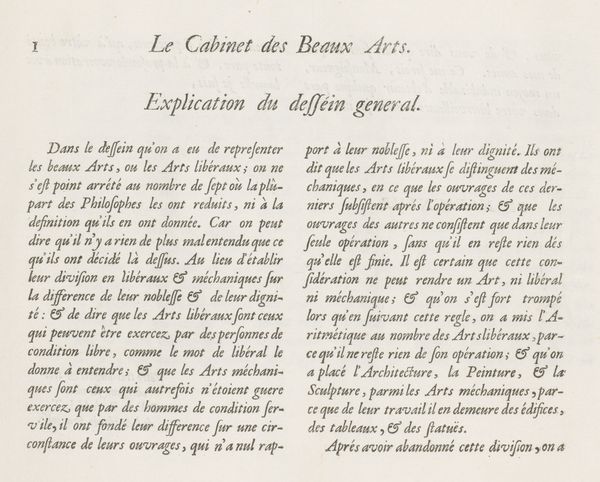
graphic-art, print, typography, engraving
#
graphic-art
#
baroque
# print
#
typography
#
engraving
Dimensions: height 281 mm, width 380 mm
Copyright: Rijks Museum: Open Domain
This printed page, conceived by Charles Perrault, presents "Eloquence," adorned with symbols laden with historical weight. Here, Eloquence is depicted as a crowned nymph draped in royal purple, holding a scepter, she embodies the power of persuasive speech. Consider the scepter—an emblem of authority stretching back to antiquity. We see it echoed in the hands of rulers across epochs, from the pharaohs of Egypt to the emperors of Rome. Yet, its significance shifts. The pharaoh’s scepter was a divine right to rule, whereas, in Perrault's era, it symbolizes the power of reason and enlightened discourse. It’s a fascinating metamorphosis: the scepter, once a symbol of brute power, now represents intellectual sovereignty. The emotional resonance of such imagery cannot be overstated. The authority, whether wielded through force or eloquence, evokes primal responses—fear, respect, awe. These are the threads that bind us to the past, echoing through our collective consciousness. The scepter persists, a testament to our enduring fascination with power.
Comments
No comments
Be the first to comment and join the conversation on the ultimate creative platform.
